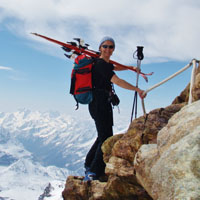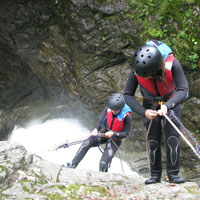Culture, Architecture & Sightseeing
The Aosta Valley is studded with over 100 castles in varying states of decay. There are Roman bridges, crypts and ruins aplenty. The Via Francigena connects many of these but in truth, each hamlet offers its own slice of history. We've just mentioned a few things below that are near to home and dear to us. First up, of course, are the villages of Fontainemore and their storybook houses. Here, homes nestle atop "mushrooms stilts" whilst others appear to sprout out of the rocks. Each community can be identified through their chapels where homes suckle under weathered pictures of biblical scenes. The spectacular semi-abandoned village of Farettaz is little known but lest forgotten.
http://www.lamaisonette.eu/2017/index.php/en/brivido-gb#sigFreeIda4414f71b0
In neighbouring Tour d'Hereraz, become spellbound by the lofty Pont Moretta and its resident troll. Just above this narrow chasm lies the medieval village of Perloz with walls thick enough to resist time itself. It is near here that you should visit Madonna della Guardia and some of the best frescoes in the region. Continue through woodland along goat-herding trails until finally arriving in a bona fide fairytale - Chemp. Now accessible by road, "Pino Bettoni" has transformed an entire hamlet into a living studio of art and sculpture. It is truly remarkable and worthy of its own page in a Lonely Planet. Fortunately, it does not appear in any such book so you could have the place and its ambience all to yourself.
http://www.lamaisonette.eu/2017/index.php/en/brivido-gb#sigFreeId730f5f3643
Unlike Chemp, the imposing Fortress of Bard (14km) is hardly a secret. However, the encircling borg, not visible from the road, is quite extraordinary. Houses are still riddled with musket holes from a Napoleonic fight while frescos and fountains are aplenty. The nearby Borg of Donnas with its Roman archway and stunning stone terracing are no less dramatic. All are connected by the famous pilgrimage route of the Via Francigena that once ran from Canterbury, England until Rome. The exterior of the fortress (free) offers great views of the valley whilst its interior houses an interesting Alpine Museum. The impressive counterbalance lift to and from the fortress is also free and well worth a ride. Issogne with its sublime frescos and furniture is just 24km away. Do not miss the opportunity to visit this castle. It seems impervious to decay and is like walking through a period drama. If history is not your thing then make this the acid test.
http://www.lamaisonette.eu/2017/index.php/en/brivido-gb#sigFreeId6f378036b4
The Gressoney Valley can also be explored by car. The 20km drive up to Saint-Jean (1700m) is beautiful in itself but this quaint town has much more to offer. A guided tour of the Savoia Castle and its pleasant botanical gardens are well worth the modest admission fee. You will also witness a sudden change of dialect and cuisine. Things become more Germanic as you enter into the abode of "The Walsers". If pizza and vino could ever become tiresome then wash down your strudel with a fine Weiss bier.
http://www.lamaisonette.eu/2017/index.php/en/brivido-gb#sigFreeId59f9e178b9










